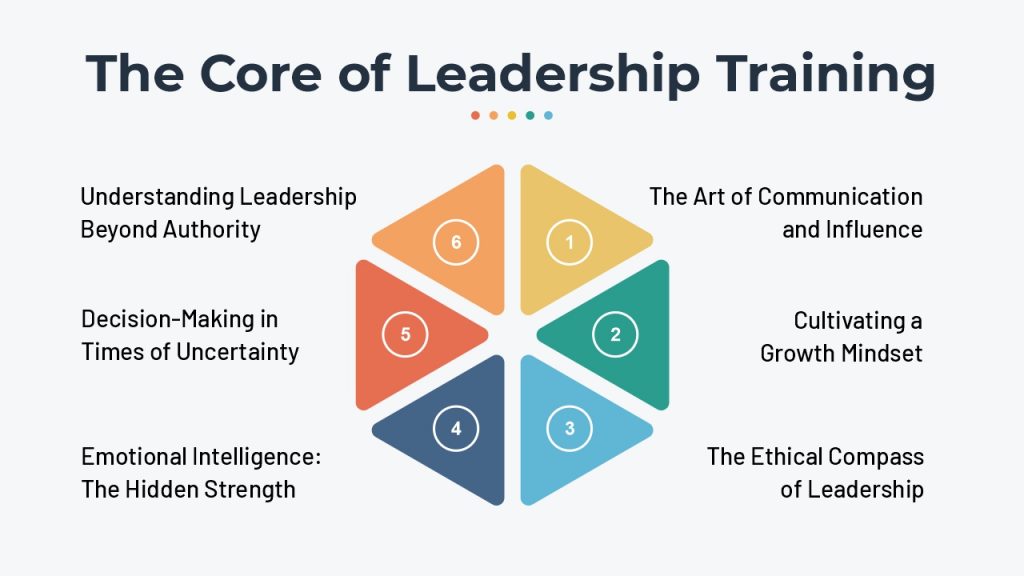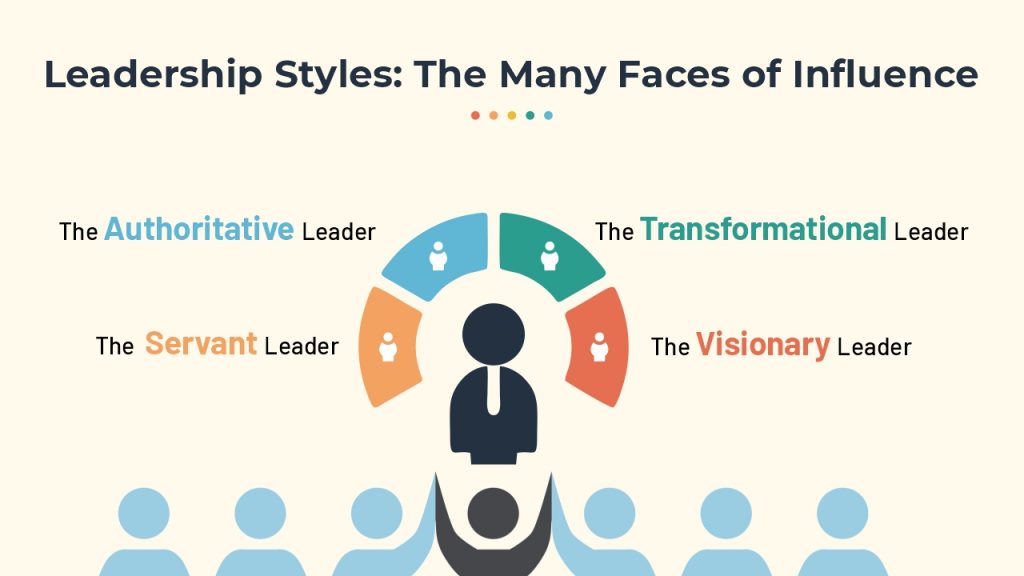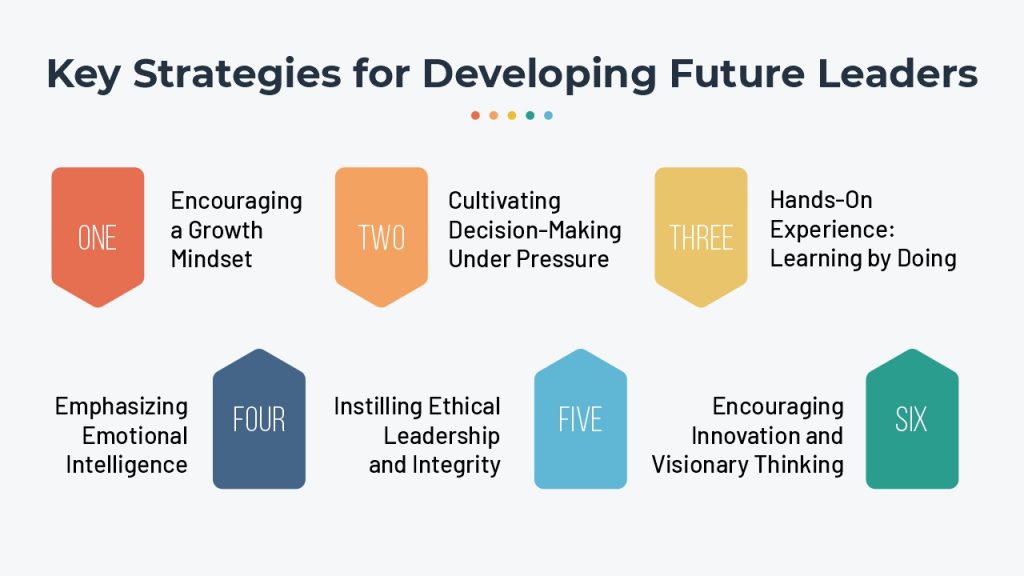Table of Contents
ToggleDeveloping Leaders: The Art and Science of Training for Leadership

Leadership is not just about authority, power, or position. It is about vision, influence, and the ability to inspire others. In a world that is constantly evolving, where industries are being reshaped by technology and societal expectations are shifting, the importance of developing leaders has never been more pressing. Organizations that fail to invest in training for leadership risk falling behind, while those that embrace leadership development build resilient teams and future-ready enterprises.
Yet, leadership is not merely a set of skills to be learned; it is a journey—one that intertwines personal growth, emotional intelligence, and strategic foresight. Developing a leader requires more than a textbook or a weekend seminar; it requires experience, mentorship, and a deep understanding of human nature.
Imagine an orchestra where each musician plays their own tune without direction. The result? Chaos. Now, introduce a conductor who understands the strengths of each instrument, who guides the rhythm, and who brings harmony to the composition. That is what great leadership does—it transforms potential into power, aligning individual efforts toward a shared purpose.
To illustrate this concept, we’ll explore fresh perspectives on leadership training, real-world examples, and actionable insights on how to nurture leaders for the future.
The Core of Leadership Training
Leadership is not a mere position; it is a journey of growth, resilience, and vision. At the heart of this journey lies training for leadership—a transformative process that molds individuals into inspiring, effective, and ethical leaders. But what defines the core of leadership training? It is a blend of knowledge, self-awareness, and the ability to influence others for a greater cause.

Understanding Leadership Beyond Authority
Training for leadership begins with the realization that true leadership is not about power—it is about service. A leader is not measured by their ability to command but by their capacity to inspire and uplift others. Developing leaders requires fostering an environment where trust, empathy, and collaboration are paramount.
Emotional Intelligence: The Hidden Strength
Great leaders do not just think; they feel. Emotional intelligence is the backbone of effective leadership training, allowing individuals to navigate challenges with grace, communicate with clarity, and foster meaningful relationships. Without this ability, even the most strategic leaders may falter.
Decision-Making in Times of Uncertainty
The world is unpredictable, and leadership often means steering through stormy waters. Training for leadership must emphasize the importance of adaptability and strategic decision-making. Leaders must learn to analyze situations quickly, embrace uncertainty, and make choices that align with long-term vision and values.
The Art of Communication and Influence
A leader’s words can build or break trust. Developing leaders means honing their ability to articulate ideas clearly, listen actively, and inspire action. Whether speaking to a crowd or mentoring an individual, the ability to convey messages with conviction and authenticity is a non-negotiable skill.
Cultivating a Growth Mindset
Leadership is not a fixed state; it is an evolving discipline. True leaders understand that there is always more to learn. Training for leadership should instill a growth mindset—encouraging individuals to seek feedback, embrace failures as lessons, and continuously strive for improvement.
The Ethical Compass of Leadership
The greatest leaders are not just competent but also principled. Leadership training must incorporate ethical decision-making, ensuring that leaders act with integrity, fairness, and social responsibility. Without a moral compass, leadership loses its purpose.
At its core, leadership training is about transformation. It is about equipping individuals with the mindset, skills, and values necessary to lead with wisdom and heart. Developing leaders is not about creating figures of authority but nurturing visionaries who will shape the future with courage, compassion, and conviction.
Building Leadership Through Experience
Leadership is not learned from textbooks alone. It is carved from real-life experiences, shaped by challenges, and refined through action. Training for leadership is incomplete without exposure to the real world, where decisions have consequences and actions speak louder than words.
The Power of Hands-On Learning
Knowledge is essential, but experience is the true teacher. Developing leaders means placing them in situations where they must make decisions, solve problems, and take responsibility for outcomes. These real-world trials forge resilience, adaptability, and confidence.
Mentorship: Learning from the Wise
No leader stands alone. Guidance from seasoned mentors can accelerate growth, providing insight, support, and invaluable lessons learned from past successes and failures. Training for leadership should integrate mentorship programs, allowing aspiring leaders to learn from those who have walked the path before them.
Failure: The Best Teacher of Leadership
Fear of failure is the enemy of progress. True leaders understand that setbacks are not the end but stepping stones to wisdom. Developing leaders requires shifting perspectives—seeing failures as lessons and using them to refine strategies, strengthen resilience, and grow stronger.
Leading by Doing
Classroom theories cannot replace action. Training for leadership must involve real projects, decision-making responsibilities, and on-the-ground experience. Only by doing can one truly understand the intricacies of leadership and build the confidence to lead with conviction.
Adapting to Change
The modern world is dynamic, and leadership demands adaptability. Leaders who cannot pivot in the face of change risk obsolescence. Training for leadership should focus on cultivating adaptability, ensuring that leaders can embrace new challenges, technologies, and societal shifts with open arms.
Leadership is not granted; it is earned through experience. Developing leaders requires immersing them in real-world challenges, guiding them through failures, and encouraging them to lead by example. Only then can they truly grasp the depth of leadership and wield it with wisdom and purpose.
Leadership Styles: The Many Faces of Influence
Leadership is not a one-size-fits-all concept. Different situations call for different styles, and a great leader must know when to adapt their approach. Training for leadership must include an understanding of these varied leadership styles and how they shape organizations and communities.

The Visionary Leader
A visionary leader sees beyond the present, painting a picture of the future and inspiring others to follow. They rely on innovation, creativity, and long-term thinking to propel their teams forward.
The Servant Leader
Servant leaders put their team first, prioritizing the growth and well-being of others. Developing leaders in this style requires fostering empathy, active listening, and a genuine desire to uplift those around them.
The Transformational Leader
These leaders bring change. They challenge the status quo, inspire new ideas, and encourage their teams to push boundaries. Training for leadership often focuses on building the courage and vision required for transformational leadership.
The Authoritative Leader
While often misunderstood, authoritative leaders provide clear direction and decisive action. When used ethically, this style can lead to great efficiency and a strong sense of order within a team.
Great leadership is not rigid but fluid. Developing leaders requires an understanding of various styles and the wisdom to use them at the right moments. The best leaders are those who can navigate different leadership approaches with confidence and integrity.
Diversity, Equity, and Inclusion in Leadership
Diversity, equity, and inclusion are no longer optional in leadership—they are essential. Training for leadership must emphasize the value of different perspectives, ensuring that developing leaders create inclusive environments where every individual feels valued and heard.
Breaking Down Barriers
True leadership means breaking down barriers of bias, discrimination, and systemic inequalities. Developing leaders must understand how to foster diverse teams and build cultures of belonging.
The Power of Inclusive Decision-Making
Leaders who embrace diversity make better decisions. Training for leadership should teach how varied perspectives lead to richer solutions and stronger organizations.
Diversity, equity, and inclusion are the future of leadership. Developing leaders must champion these values, ensuring that their leadership style reflects fairness, empathy, and empowerment for all.
Real-World Example: Satya Nadella and Microsoft’s Leadership Evolution
To understand leadership transformation, let’s take a look at Satya Nadella, the CEO of Microsoft. His leadership story is a masterclass in developing leaders and training for leadership.
1. A Shift from Authority to Empathy
When Nadella took over Microsoft in 2014, the company was struggling with stagnation. Under his predecessor, the corporate culture was known for internal competition rather than collaboration. Nadella’s first move was to change the mindset from one of knowing everything to one of learning.
2. Creating a Growth-Oriented Culture
Nadella introduced a leadership philosophy focused on curiosity and adaptability. He encouraged employees to embrace a ‘learn-it-all’ mentality instead of a ‘know-it-all’ attitude. This was not just a policy change—it was a complete cultural shift.
3. Investing in People
Recognizing the importance of training for leadership, Microsoft introduced internal leadership development programs, focusing on coaching, mentorship, and inclusivity. Employees were encouraged to take risks and learn from failure rather than fear it.
4. Business Transformation and Results
By focusing on developing leaders within the organization, Microsoft’s market value soared, and the company became a leader in cloud computing, AI, and innovative technology solutions. The leadership transformation Nadella spearheaded wasn’t just about financial growth; it was about changing how people led and worked together.
Key Strategies for Developing Future Leaders
The world is constantly evolving, and with it, the demand for visionary leaders grows stronger. Developing leaders is not a passive process—it requires intention, dedication, and a strategic approach. Training for leadership is more than imparting knowledge; it is about sculpting individuals who can navigate uncertainty, inspire others, and drive meaningful change.

Encouraging a Growth Mindset
At the heart of leadership lies a mindset of continuous learning. Future leaders must be curious, adaptable, and resilient. Training for leadership should focus on fostering a growth mindset—encouraging individuals to embrace challenges, seek feedback, and view failures as opportunities for growth. Leaders who believe in evolution rather than stagnation will always be prepared for the demands of tomorrow.
Hands-On Experience: Learning by Doing
Theory alone cannot shape great leaders. Developing leaders means immersing them in real-world challenges where decisions have consequences. Leadership training programs should integrate mentorship, apprenticeships, and hands-on projects to allow future leaders to apply their skills in practical settings. Only through experience can they build confidence, resilience, and strategic acumen.
Emphasizing Emotional Intelligence
Leaders are not only thinkers but also feelers. The ability to connect with others, understand emotions, and navigate interpersonal dynamics is essential in leadership. Training for leadership should prioritize emotional intelligence—helping individuals develop self-awareness, empathy, and effective communication skills. A leader who understands people leads not with authority but with influence.
Cultivating Decision-Making Under Pressure
Uncertainty is the only certainty in leadership. Future leaders must be able to think on their feet, analyze situations quickly, and make informed decisions under pressure. Leadership training should include crisis simulations, scenario planning, and critical thinking exercises to equip leaders with the skills to navigate complex situations with confidence and clarity.
Instilling Ethical Leadership and Integrity
The world does not need more leaders who chase power—it needs leaders who uphold values. Developing leaders should involve instilling ethical decision-making and integrity. Training for leadership should emphasize accountability, fairness, and social responsibility, ensuring that future leaders prioritize the greater good over personal gain.
Encouraging Innovation and Visionary Thinking
A true leader does not just manage the present but envisions the future. Training for leadership should encourage innovative thinking, challenging individuals to step outside conventional boundaries and reimagine possibilities. By fostering creativity, future leaders can drive progress, inspire teams, and leave a lasting impact.
Developing leaders is a responsibility that shapes the future. It requires a multi-faceted approach—one that balances knowledge with experience, logic with emotional intelligence, and strategy with ethics. Training for leadership should be a dynamic, evolving process that prepares individuals not only to lead but to inspire transformation. The future belongs to those who are willing to grow, learn, and lead with vision and integrity.
The Future of Leadership Training: What Lies Ahead?
Leadership is no longer confined to boardrooms and executive suites—it has expanded into every aspect of life. As the world shifts, so must the way we train our leaders. The future of leadership training will be marked by innovation, inclusivity, and adaptability. Developing leaders in the modern age means preparing them for an unpredictable, rapidly changing landscape.
Personalized Learning Paths
No two leaders are alike, and training for leadership should reflect that. The future of leadership training will embrace personalized learning paths, leveraging AI and data analytics to create tailored development programs. Instead of a one-size-fits-all model, future leaders will receive training that aligns with their strengths, weaknesses, and aspirations.
Technology-Driven Training
The rise of digital learning platforms, virtual reality simulations, and AI-powered coaching will revolutionize leadership training. Developing leaders will no longer be limited by geographical barriers—technology will enable immersive, interactive training experiences that simulate real-world challenges in safe environments.
Focus on Adaptive and Agile Leadership
The future demands leaders who can pivot quickly and embrace change. Training for leadership will shift towards agility, adaptability, and rapid decision-making. Future leaders must be equipped to handle crises, technological disruptions, and global shifts with confidence and strategic foresight.
Emphasizing Soft Skills and Emotional Intelligence
While technical skills matter, the future of leadership training will focus even more on soft skills—emotional intelligence, empathy, and communication. As automation takes over routine tasks, the human element of leadership will become the defining factor of great leadership.
Diversity, Equity, and Inclusion at the Core
Leadership cannot thrive in exclusivity. The future of leadership training will place diversity, equity, and inclusion at its core, ensuring that future leaders reflect the richness of society. Developing leaders from all backgrounds will create a more inclusive, innovative, and representative leadership landscape.
Sustainability and Ethical Leadership
The next generation of leaders will not only be responsible for organizations but for the world at large. Training for leadership will incorporate sustainability, social responsibility, and ethical decision-making, ensuring that leaders prioritize long-term impact over short-term gain.
The future of leadership training is dynamic, personalized, and deeply human. As the world evolves, so must our approach to developing leaders. The leaders of tomorrow will be those who embrace change, prioritize people, and lead with integrity. Leadership training is not just about preparing individuals for roles—it is about shaping the future of the world.
FAQs
Conclusion
Leadership is not a destination; it is a continuous journey. Organizations that invest in developing leaders and prioritize training for leadership will thrive in an unpredictable future. By fostering a culture of learning, empathy, and innovation, businesses can build a new generation of leaders ready to inspire, adapt, and create lasting impact.
The question is not whether leadership training is necessary—it is how we can make it more effective, more inclusive, and more transformative. The future of leadership is in our hands. The time to start building it is now.

